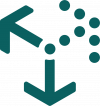The overall goal of WP1 is to generate time-series data from perturbation experiments (pest invasions) in microalgal photobioreactors (PBRs) for subsequent identification of early warning signals, and quantification of threshold values and warning times.
- Task 1.1. Perturbation experiments 1: seawater
Experiments with the model diatom Phaeodactylum tricornutum will be carried out in continuous-flow PBRs under laboratory-controlled conditions of light, temperature, hydraulic retention time (1-2d), and nutrient supply. The dynamics of microbial populations, the productivity of the system, and its performance stability will be analysed in the face of perturbations. The cultures will be initially supplied with artificial seawater (SW) medium until reaching the steady-state. Then, perturbations will consist in switching the artificial SW growth medium to nutrient-enriched natural SW. Seawater will be collected during winter, spring, and summer at a coastal station in the Catalan sea, characterized by seasonally-different microbial community compositions. - Task 1.2. Perturbation experiments 2: wastewater
Cultures of the green algae Chlorella sp. will be exposed to wastewater (WW). As in Task 1, experiments will be carried out in continuous-flow PBRs under laboratory-controlled conditions of light, temperature and hydraulic retention time (1-2 d). The cultures will be supplied with artificial growth media until reaching the steady-state. The perturbations will consist in switching the artificial growth media to wastewater (WW). The population dynamics of Chlorella sp. and the microbiome, the system’s productivity, and its performance stability will be analysed. If the switch to WW were insufficient to alter the population dynamics of the resident microalgal strain Chlorella sp., then, the concentration of pathogens in the WW will be increased artificially to force the crash. - Task 1.3 Bioinformatic analyses from PBRs genomics data
Samples for metabarcoding, metagenomics, metatranscriptomics and metaproteomics will be collected from the experimental setups described in Tasks 1 and 2 at the frequencies. Water samples will be filtered through 2 and 0.2 m polycarbonate filters to facilitate the discrimination of the prokaryotes (<2m nominal pore size), which tend to overwhelm the signals due to their high population densities, and eukaryotes (>2m). The eukaryome will be largely monopolized by the microalgal strain and thus, deep sequencing will be required to uncover the entire community. To further determine the relevance of other microbial groups, such as cyanobacteria, flagellates or predators, genomic analyses will be also compared against conventional identification methods, such as flow cytometry, optical microscopy, and computerized imaging methods. - Task 1.4 Chemical fingerprint
This task will characterize the chemical environment in microalgal PBRs focusing on two targets, the dissolved organic matter (DOM) fraction in the aqueous phase and the volatile organic compounds (VOC) in the headspace of the microalgal bioreactor. Water samples will be collected directly from the bioreactor outflow for the analysis of dissolved organics. A North Sea water lab standard (NSW) and blank ultrapure water (UPW) will be analysed for reproducibility measures and batch data evaluation will be carried out based on the open-access software UltraMassExplorer (www.awi.de/en/ume). Raw data will be deposited and publicly accessible through the UME servers and the PANGAEA data repository for the peak list.









